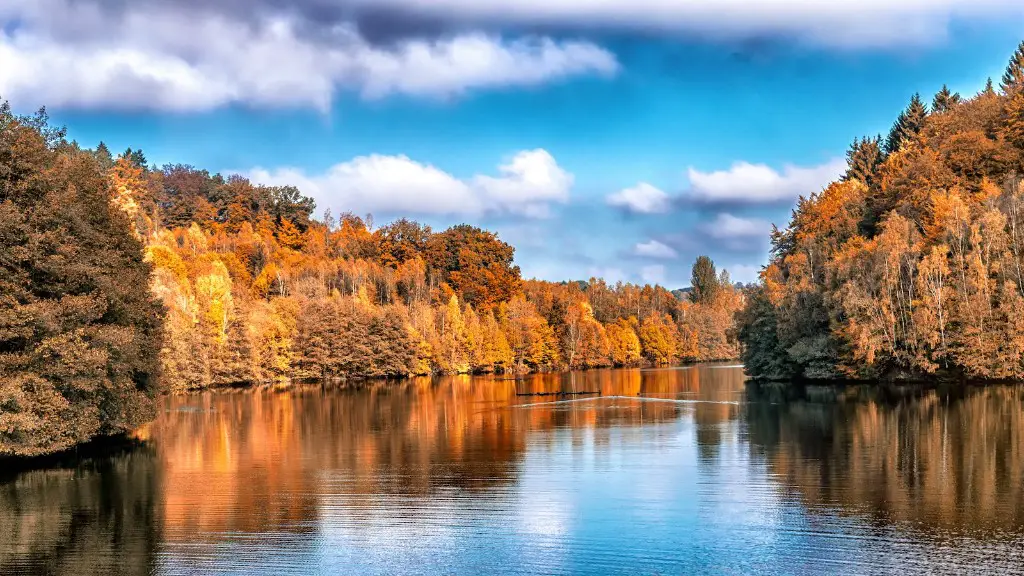The Ganges River is one of the longest rivers in the world and it is considered to be one of the most sacred rivers in Hinduism. Every year, millions of Hindus pilgrimage to the river to bathe in its holy waters. The river is also an important source of water for agriculture and industry.
However, the Ganges River is also one of the most polluted rivers in the world. The pollution is caused by the dumping of industrial and human waste into the river. As a result, the river is becoming increasingly toxic and is having a negative impact on the environment.
The Ganges river has a profound effect on the environment. The river provides water for millions of people and is also home to a variety of plant and animal life. The Ganges river has a significant impact on the climate and weather patterns in the region. Additionally, the river plays a role in the water cycle and helps to regulate the flow of water in the environment.
How does the Ganges River affect the economy?
The Ganges basin is one of the most fertile areas in the world and plays a significant role in the agricultural economies of both India and Bangladesh. The Ganges and its tributaries provide a perennial source of irrigation to a large area, in addition to recharging the groundwater table all along their course. This makes the Ganges basin one of the most important agricultural regions in the world.
Water pollution is a huge problem in India and it is estimated that 80% of all health problems and one-third of deaths in India are attributable to water-borne diseases. Some of the water-borne diseases that are common in India include cholera, hepatitis, typhoid and amoebic dysentery. These diseases can often be fatal if they are not treated properly and quickly. It is important to take steps to prevent water pollution and to ensure that all water used in India is clean and safe.
What is the biggest pollutant in the Ganges river
The Ganges River is one of the most polluted waterways in the world due to the large amount of sewage that is emptied into it every day. Only about half of the sewage that is dumped into the river undergoes any kind of treatment, which means that the river’s water is very dirty. This pollution is having a negative impact on the environment and on the people who rely on the river for their livelihoods.
The Ganges is one of the most sacred rivers in India, and is also one of the most polluted. Untreated sewage, industrial waste, agricultural runoff, and remnants of partially burned or unburned bodies from funeral pyres all contribute to polluting the river. High levels of disease-causing bacteria and toxic substances have also been found in the Ganges. This pollution is having a devastating effect on the river’s ecosystem, and is also making the river unsafe for human use.
Why is Ganges so important?
The Ganges River is most sacred in the Hindu tradition. It is understood as the personification of the Goddess Ganga. Hindu belief holds that bathing in the river on certain occasions causes the forgiveness of transgressions and helps attain salvation.
The cultivation of cash crops in the Ganges valley in Uttar Pradesh and Bihar has increased due to the system of irrigation canals. This has resulted in increased production of sugarcane, cotton, and oilseeds.
What happens if you swim in the Ganges?
Hindus believe that water has the power to cleanse sins and thus it is considered holy. Many Hindus take a dip in water bodies like rivers, lakes or the ocean to purify themselves. It is also a practice to sprinkle a little water on the head as a way of seeking blessings.
The Ganges river is one of the most important rivers in India. It is sacred to Hindus and is a major source of water for millions of people.
However, the river is in danger. Too much water is being taken out for farming and other uses. Barrages and dams disrupt the Ganges’ natural flow. And pollution from homes and industries have badly contaminated what’s left of this once mighty, free-flowing river.
The Ganges river is essential to the people of India. We must do everything we can to protect it.
Is Ganga river harmful for human beings
The water in the Ganges has been linked to contracting dysentery, cholera, hepatitis, and severe diarrhoea. This continues to be one of the leading causes of death of children in India. The water is contaminated with human waste, and this is the cause of the outbreaks of these diseases. The best way to prevent these diseases is to improve the sanitation and hygiene conditions near the Ganges, and to ensure that people have access to clean water.
It is estimated that each year, the Ganges River in India is responsible for the death of around 1.5 million people. The river is full of sewage and industrial waste, making it one of the most polluted rivers in the world.
The Citarum River in Indonesia is another river that is full of pollutants. The river is so polluted that it is often referred to as the “most polluted river in the world.”
The Yellow River in China is also full of pollution. In fact, the river is so polluted that it is often referred to as the “cancer river.”
The Sarno River in Italy is another river that is full of pollution. The river is so polluted that it is often referred to as the “river of death.”
The Buriganga River in Bangladesh is also full of pollution. The river is so polluted that it is often referred to as the “river of sewage.”
The Marilao River in the Philippines is another river that is full of pollution. The river is so polluted that it is often referred to as the “river of garbage.”
The Mississippi River in the United States is also full of pollution. The river is so polluted that it is often referred to as the
Does the Ganges river smell?
Thefact that the river Ganges contains untreated sewage, effluents from tanneries and other pollutants is extremely worrying. It is distressing to think that children may be playing in water that contains toxic heavy metals. It is hoped that measures will be put in place to ensure that the river is clean and safe for all.
This is great news! The Namami Gange scheme has improved the condition of the river Ganga and it is now clean. This is a huge accomplishment and will have a positive impact on the environment and the people who live along the river.
How much sewage is in the Ganges river
The main Rambha drain here dumps 152 million litres of domestic and industrial wastewater directly into the Ganges every day. A much larger city next to Rishikesh, also on the banks of the Ganges, the Upper Ganges Canal, an irrigation system for the Doab region to the west, also splits from the main river here.
The Ganges River is a sacred river to the Hindu people and is worshiped as a goddess. The river begins in an ice cave in the Himalayan Mountains and flows through India and Bangladesh. It supports over 400 million people and thousands of animal and plant species. The Ganges River is the world’s largest delta and is a key part of the Hindu religion.
What makes the Ganges River the most important?
The Ganga river is considered a lifeline of India because it provides water to 40% of the population. Additionally, it is a source of irrigation for a wide variety of crops. The Ganges Basin has fertile soil that largely influences the agricultural economies of India and Bangladesh.
While it is true that the majority of river flow is due to rain and snowmelt, there is still a significant contribution from glacial melt. This is especially important in regions where glaciers are a major source of freshwater. Once the glaciers disappear, the river flow will be reduced, resulting in a decrease in water availability for both human and natural systems.
How does the Ganges river benefit the environment
The Ganges River is one of the most important rivers in the world. Not only does it provide water for millions of people, but it also carries nutrient rich sediment that helps to fertilize the land along its shores. This has allowed civilizations to develop and thrive along the waterway for centuries.
According to the state pollution control board, the water of the Ganga river is not fit for drinking but is suitable for bathing. The board submitted a water quality analysis report on Thursday.
Final Words
The Ganges River affects the environment in a number of ways. The most obvious way is through the water itself. The Ganges is one of the most polluted rivers in the world, and the pollution has a direct impact on the environment. The pollution can cause problems for plants and animals, and it can also contaminate the groundwater.
Another way that the Ganges River affects the environment is through the sediments that it carries. The sediments can clog up waterways, and they can also make it difficult for plants to grow. The sediments can also cause flooding, which can damage crops and homes.
Finally, the Ganges River affects the environment indirectly through the people who live along its banks. The people who live along the river often depend on it for their livelihoods, and they impact the environment in a number of ways. For example, they may clear land for farming, and they may also pollute the river with sewage and other waste.
The Ganges River has a significant impact on the environment. The river provides water for agriculture, industry, and domestic use. It also supports a large population of fish, which are an important source of food for many people. The river also plays an important role in the transportation of goods and people.





